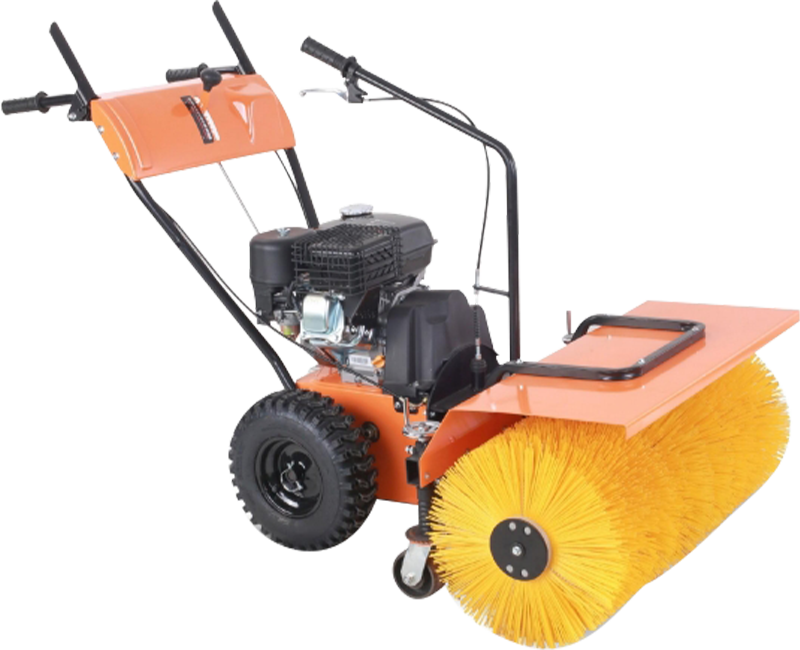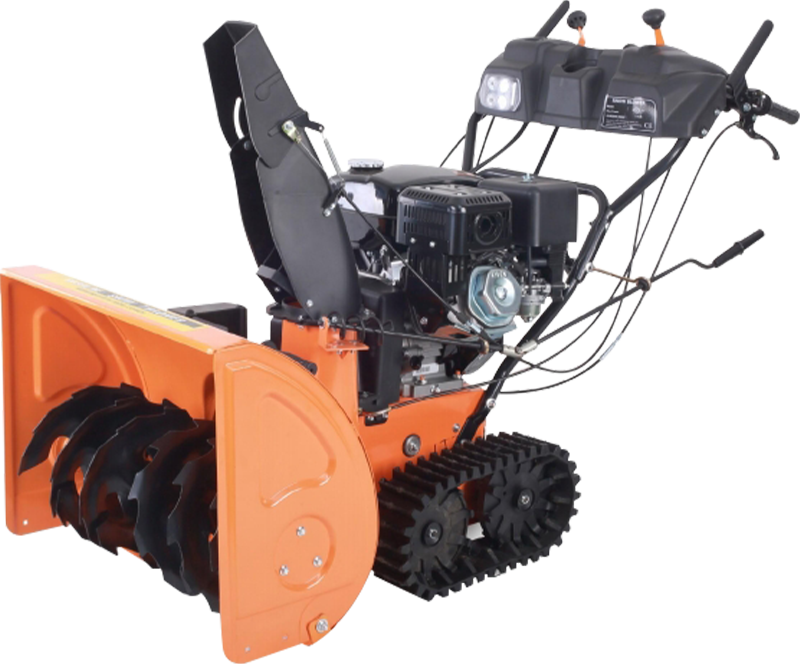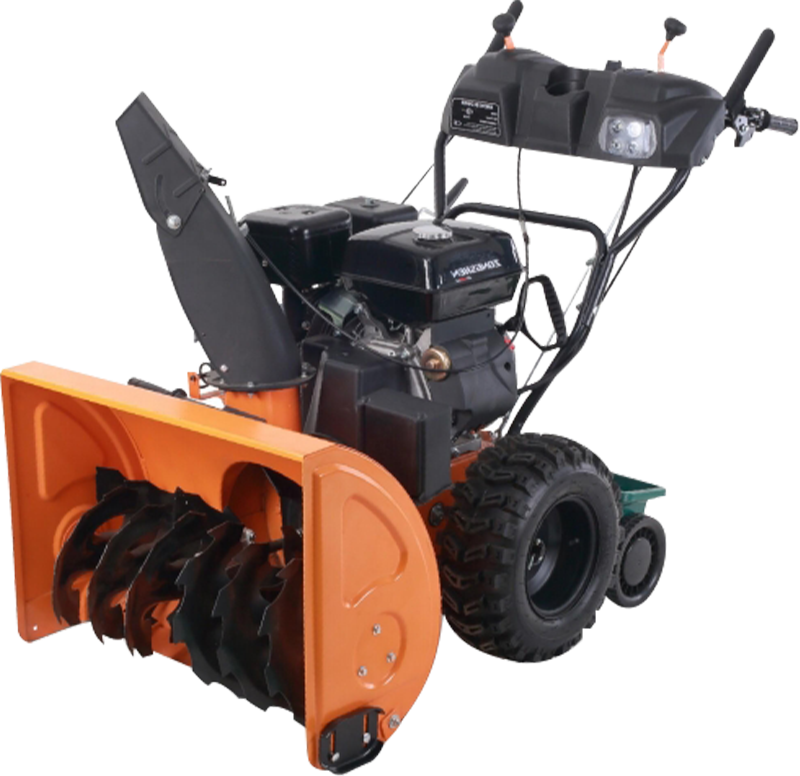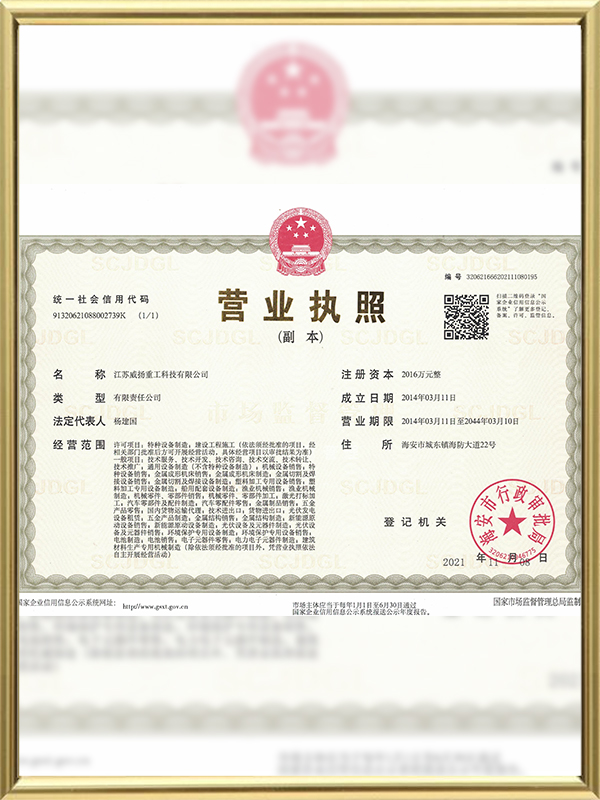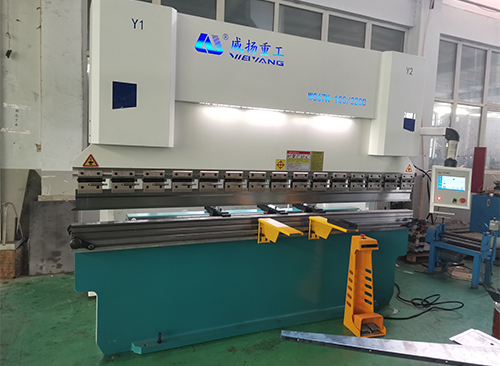Handheld snow blower is a handheld snow removal device that can be operated by hand. It uses mechanical force or electric power to blow the snow from the ground or suck it into the collector through a specific mechanical structure to achieve the purpose of clearing the snow. Compared with large snowmobiles or snowplows, handheld snow blowers are lighter and more flexible, suitable for use in small areas or hard-to-reach areas. Handheld snow blower is a gasoline-type handheld snow blower that uses a gasoline engine as a power source. This type of product usually has stronger power and longer battery life, and is suitable for scenes that require long-term continuous operation. But at the same time, gasoline engines also bring disadvantages such as high noise, exhaust emissions and the need for regular maintenance.
The mechanical structure of a handheld snow blower mainly includes three parts: the drive system, the snow blowing/snow suction system and the control system. The drive system is the core part of the handheld snow blower, which is responsible for providing power to drive the operation of the entire device. For electric products, the drive system mainly includes a motor, a battery (or a power socket) and a transmission device. The motor transmits power to the snow blowing/snow suction system through the transmission device. For gasoline products, the gasoline engine is driven through a series of transmission devices. The snow blowing/snow suction system is the key part of the handheld snow blower, which is responsible for blowing the snow from the ground or sucking it into the collector. This system usually includes components such as fans, propellers, snow blowing pipes (or snow suction ports) and collectors. The fan or propeller rotates at high speed driven by the drive system, generating a strong airflow. This airflow is guided to the surface of the snow through the snow blowing pipe (or snow suction port), blowing the snow or sucking it into the collector. The collector is responsible for temporarily storing the blown or sucked snow for subsequent processing. The control system is the operating interface of the handheld snow blower, which is responsible for receiving user instructions and controlling the operation of the device. For most handheld snow blowers, the control system is relatively simple and intuitive, usually including components such as switches, speed knobs, and snow blowing/snow suction mode selection buttons. Users can use these components to control the start, stop, speed adjustment, and selection of snow blowing or snow suction mode.
The working principle of the handheld snow blower can be summarized in the following steps.
Starting the device: The user first needs to start the gasoline engine. Once the device is successfully started, the drive system starts to run and generate power.
Generating airflow: Driven by the drive system, the fan or propeller starts to rotate at high speed and generates strong airflow. This airflow is guided to the snow blowing pipe (or snow suction port) through a specific air duct.
Blowing or sucking snow: The user points the snow blowing pipe (or snow suction port) at the snow surface and starts the snow blowing/snow suction mode. At this time, the strong airflow will impact the snow surface and blow it away or suck it into the collector. The snow blowing mode is usually suitable for loose snow or scenes that need to be cleaned quickly; while the snow suction mode is suitable for scenes that need to completely remove the snow and collect it.
Collecting snow: The snow that is blown away or sucked will enter the collector and be temporarily stored. Users can clean the snow in the collector regularly as needed to keep the device running and clean.
Adjusting the operation: During the operation, users can adjust the speed of the device, the snow blowing/snow suction mode, and the angle of the snow blowing pipe (or snow suction port) as needed to achieve the best snow removal effect.
Handheld snow blowers have many advantages in practical applications. Its portability allows users to easily carry it to any place where snow removal is needed. Its efficiency allows users to quickly clear snow and restore roads and courtyards to unobstructed conditions. Flexibility is also a major feature of handheld snow blowers. It can adapt to different shapes and sizes.





